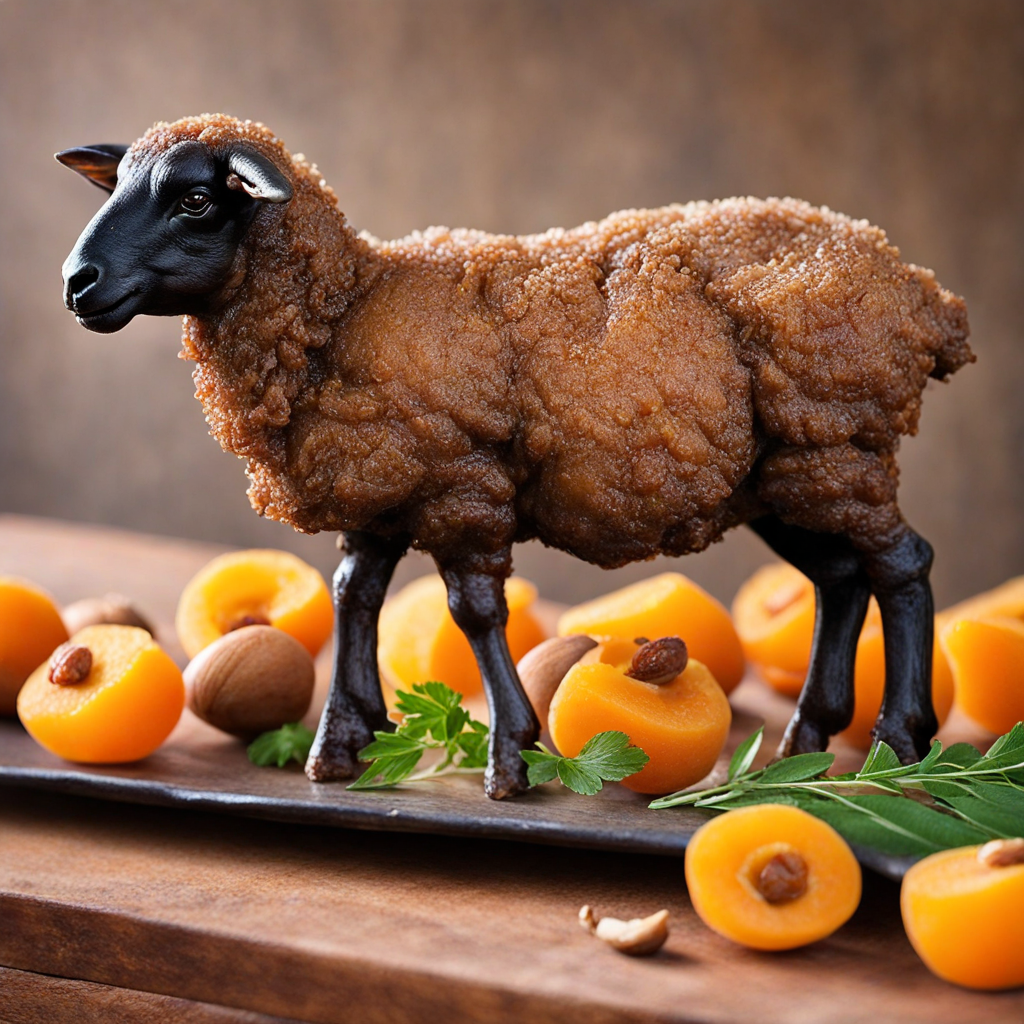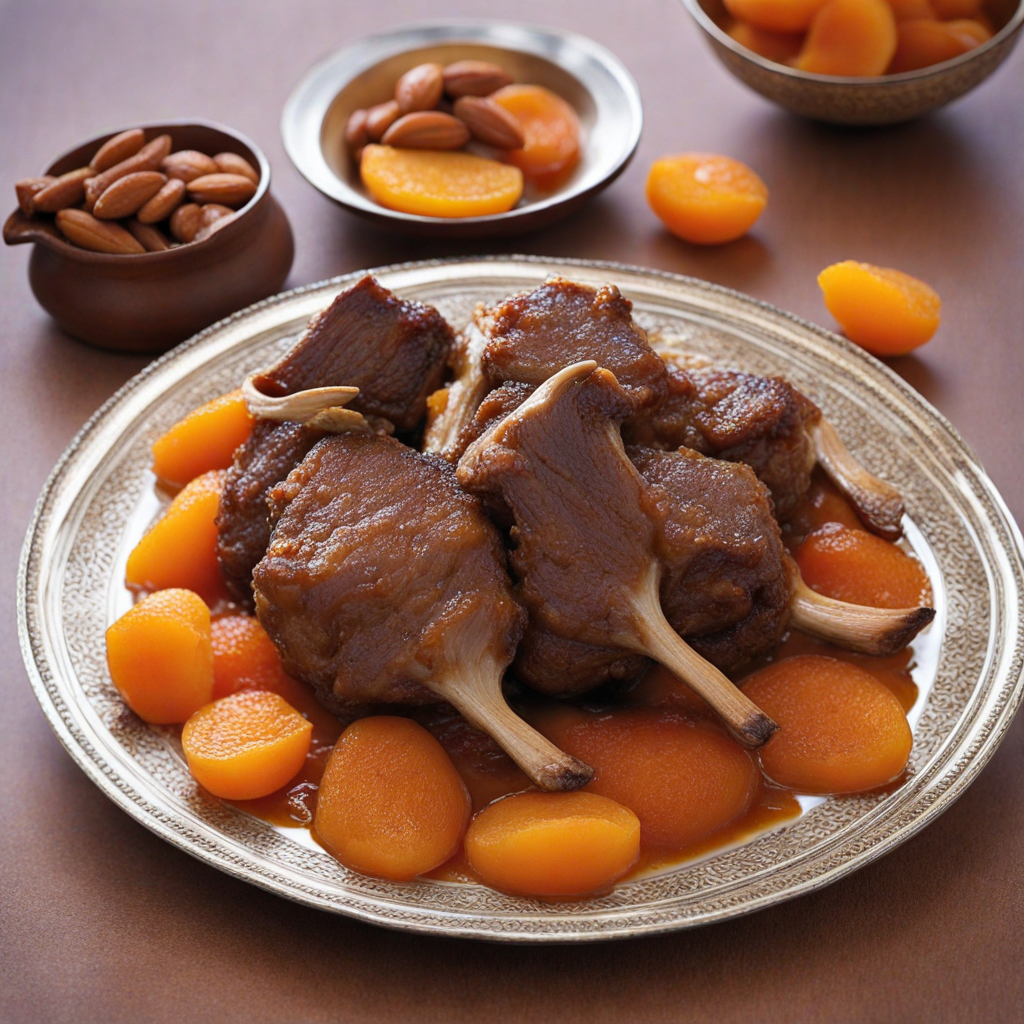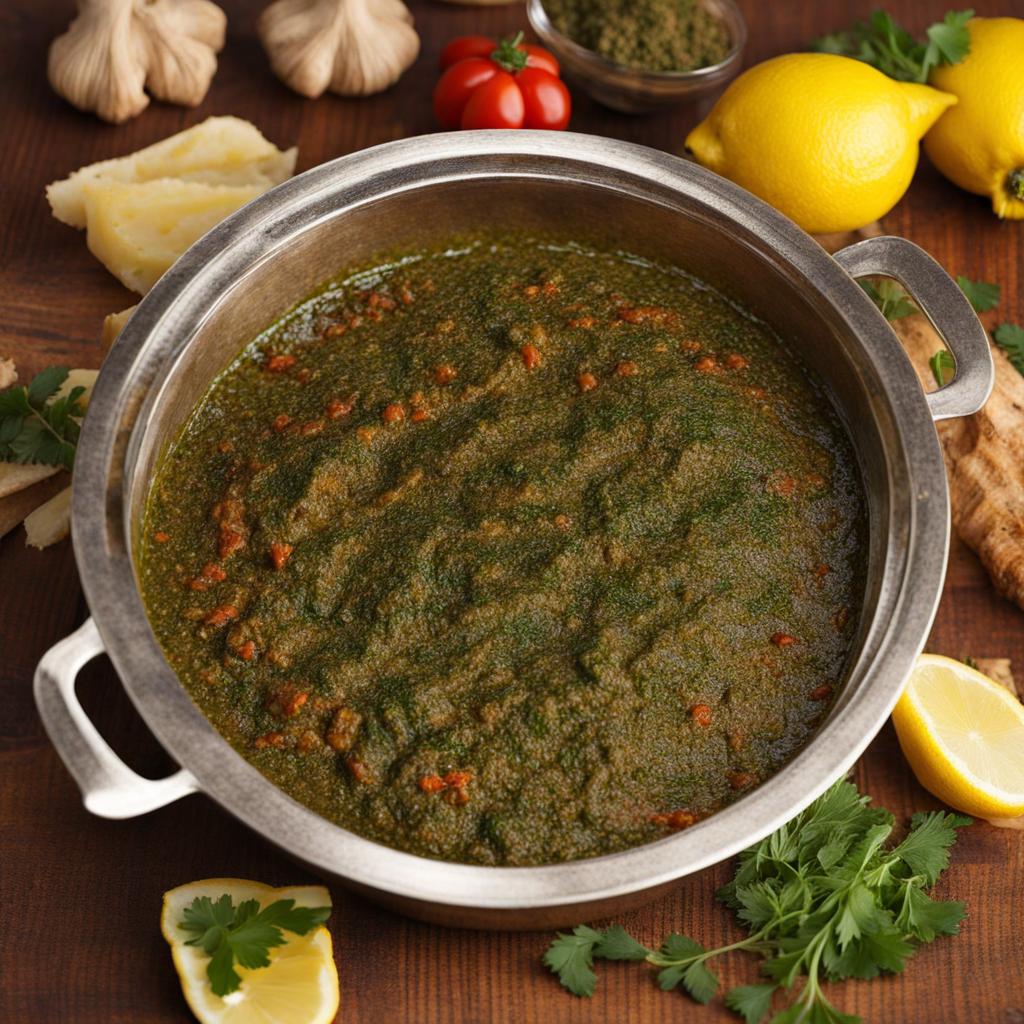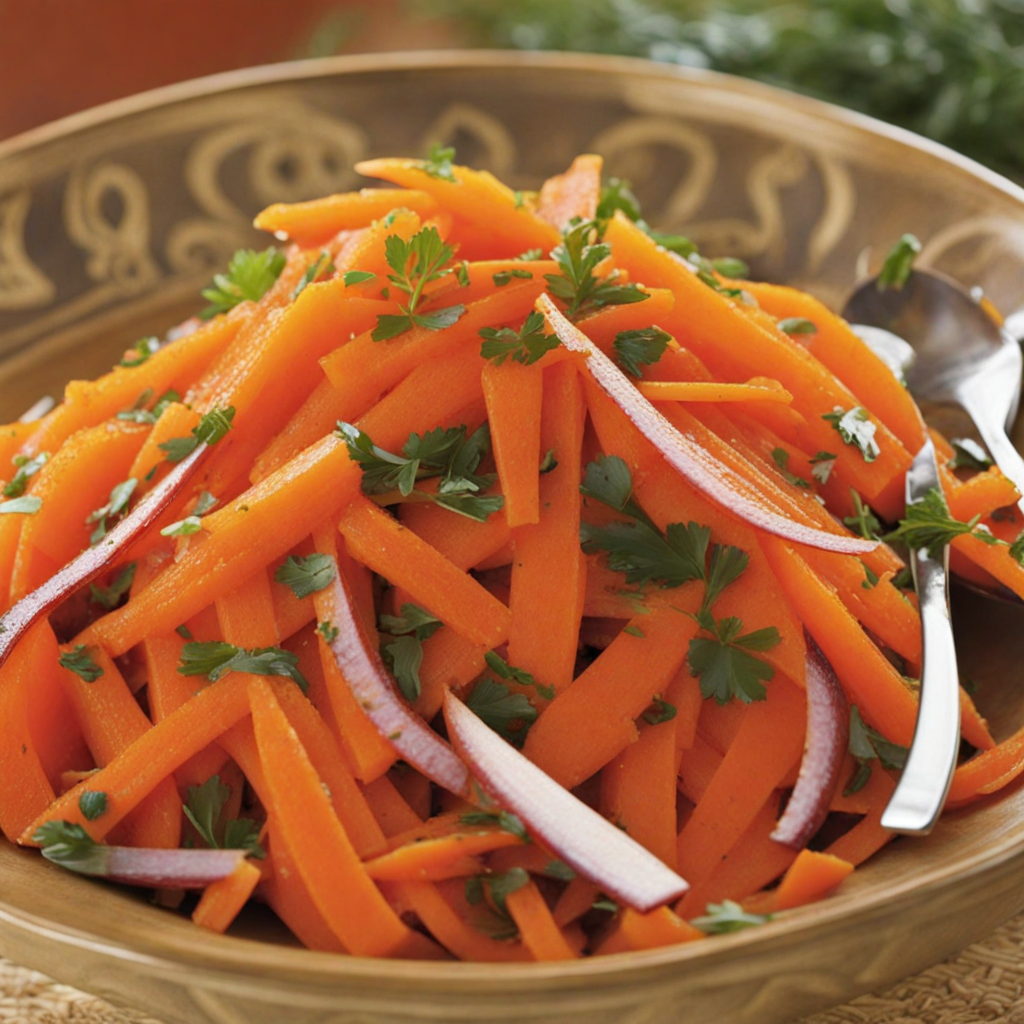Lamb with Apricots
Lamb with Apricots is a delightful Moroccan dish that embodies the rich and diverse flavors of North African cuisine. This dish features tender, slow-cooked lamb, which is seasoned with an array of aromatic spices such as cumin, coriander, and cinnamon. The addition of apricots introduces a sweet and slightly tangy note that beautifully complements the savory depth of the lamb. The meat is often braised to perfection, allowing it to absorb the fragrant spices and the natural sweetness of the apricots, resulting in a dish that is both comforting and exotic. As the lamb cooks, it becomes incredibly tender, falling off the bone and melding seamlessly with the sweet apricots and other ingredients. Often, this dish is accompanied by caramelized onions, toasted almonds, and sometimes a hint of honey, which enhances the overall sweetness and adds a delightful crunch. The interplay of textures—from the melt-in-your-mouth lamb to the chewy apricots and crunchy nuts—creates a satisfying dining experience that highlights the harmony of flavors typical in Moroccan cooking. Served alongside fluffy couscous or warm, crusty bread, Lamb with Apricots is not just a meal but a celebration of culinary tradition. The vibrant colors and enticing aromas make it a feast for the senses, inviting diners to explore the rich tapestry of Moroccan flavors. This dish is perfect for special occasions or gatherings, as it brings people together to savor its complex taste and share in the joy of an unforgettable culinary journey.
How It Became This Dish
Lahm bil Mishmash: A Culinary Journey Through Moroccan History Origins of Lahm bil Mishmash Lahm bil Mishmash, a delightful Moroccan dish that translates to "meat with apricots," is a prime example of the rich tapestry of flavors and traditions that characterize Moroccan cuisine. This dish primarily features tender lamb or beef, slow-cooked with a luscious sauce made from fresh or dried apricots, almonds, and a harmonious blend of spices. Its origins can be traced back to the diverse influences that have shaped Moroccan culinary practices over centuries, with roots that intertwine Berber, Arab, and Andalusian traditions. The Berbers, the indigenous people of North Africa, were the first to cultivate apricots in the region. Their agriculture-based lifestyle allowed them to develop various methods of cooking with fruits, incorporating them into savory dishes. The introduction of new spices and ingredients from the Arab conquests in the 7th century enriched the local cuisine, bringing in flavors that would become staples in Moroccan cooking. Cultural Significance Lahm bil Mishmash holds a special place in Moroccan culture, often served during festive occasions, family gatherings, and celebrations such as weddings and religious holidays. The dish embodies the Moroccan spirit of hospitality and community, as it is typically prepared in large quantities to share with family and friends. In Moroccan tradition, the act of sharing food is deeply rooted in the culture, emphasizing generosity and togetherness. Lahm bil Mishmash, with its vibrant colors and enticing aroma, symbolizes abundance and joy, making it a perfect centerpiece for gatherings. It is typically served alongside fluffy couscous or warm bread, allowing diners to enjoy a communal meal that fosters connection and conviviality. Moreover, the use of apricots in the dish is significant, as they represent the agricultural richness of Morocco. The country’s climate, particularly in regions like the Souss Valley, is ideal for growing stone fruits, and apricots have become emblematic of Moroccan summertime. The sweet-tart flavor of apricots contrasts beautifully with the savory meat, creating a dish that showcases the balance of flavors that Moroccan cuisine is known for. Development Over Time The evolution of Lahm bil Mishmash reflects the broader changes in Moroccan society and its culinary practices. During the medieval period, the Almoravid and Almohad dynasties played a crucial role in unifying the country and promoting trade across the Mediterranean and Sub-Saharan Africa. This period saw the introduction of new ingredients and cooking techniques that would influence Moroccan cuisine profoundly. With the influx of spices such as saffron, cinnamon, and ginger from the East, Moroccan cooks began to experiment with combining sweet and savory flavors. Lahm bil Mishmash exemplifies this culinary innovation, as the sweetness of apricots enhances the rich, savory notes of the slow-cooked meat. This blending of flavors became a hallmark of Moroccan cooking, setting it apart from other Mediterranean cuisines. The arrival of Jewish communities in Morocco also contributed to the development of Lahm bil Mishmash. Jewish cooks adapted traditional Moroccan recipes, infusing them with their culinary techniques and ingredients. As a result, the dish may have variations that reflect both Jewish and Muslim culinary traditions, showcasing the multicultural fabric of Moroccan society. In the 20th century, as Morocco navigated its path towards independence and modernity, there was a resurgence of interest in traditional foods. Chefs and home cooks alike began to revisit classic recipes, ensuring that dishes like Lahm bil Mishmash remained relevant in contemporary Moroccan kitchens. The global fascination with Moroccan cuisine, fueled by the rise of culinary tourism and the international popularity of Moroccan tagines, has further elevated dishes like Lahm bil Mishmash to a broader audience. Today, Lahm bil Mishmash is not only a beloved dish in Morocco but has also found its way onto restaurant menus worldwide. Its combination of tender meat, sweet apricots, and aromatic spices continues to captivate food enthusiasts, allowing the dish to transcend cultural boundaries. Cooking Lahm bil Mishmash To prepare Lahm bil Mishmash, one typically starts by browning pieces of lamb or beef in a heavy pot, often a traditional tagine. Aromatic spices such as cumin, coriander, and cinnamon are added to create a fragrant base. Onions and garlic are sautéed until soft, followed by the addition of apricots—fresh or dried, depending on the season. The dish is then simmered slowly, allowing the flavors to meld beautifully. Adding a splash of honey enhances the sweetness of the apricots, while toasted almonds provide a satisfying crunch. As the meat cooks, it becomes tender and infused with the rich flavors of the spices and fruit. Traditionally served with couscous or bread, Lahm bil Mishmash is often garnished with fresh herbs such as cilantro or parsley, adding a pop of color and freshness to the dish. This presentation reflects the Moroccan philosophy of food as not just sustenance but an art form that engages the senses. Conclusion Lahm bil Mishmash is more than just a dish; it is a culinary narrative that encapsulates the history, culture, and identity of Morocco. From its ancient origins to its modern adaptations, this dish embodies the spirit of Moroccan hospitality and the vibrant interplay of flavors that define the region's cuisine. As Moroccan food continues to gain appreciation around the world, Lahm bil Mishmash stands out as a testament to the enduring legacy of a rich culinary heritage, inviting all to experience the warmth and richness of Moroccan culture through its exquisite flavors.
You may like
Discover local flavors from Morocco







